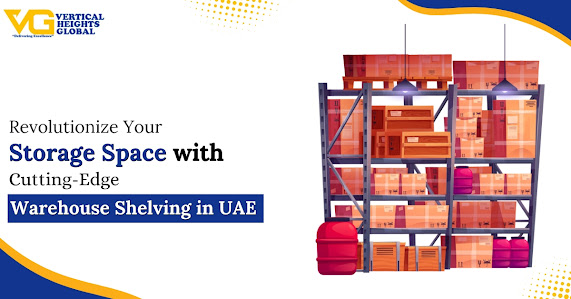In Dubai’s unique environment, maintaining and caring for your warehouse pallets is essential to ensure longevity, safety, and efficiency. As one of the world's leading logistics hubs, Dubai experiences extreme temperatures and high humidity levels that can affect warehouse equipment, including pallets and warehouse racking systems. Proper maintenance not only extends the lifespan of your pallets but also optimizes your warehouse operations. Here’s a comprehensive guide to help businesses in Dubai keep their warehouse pallets in top condition.
Understanding the Challenges of Dubai’s Climate
Dubai's desert climate is characterized by extremely high temperatures during the summer months, often exceeding 40°C (104°F), and high humidity levels. These factors can cause materials like wood and plastic to warp, degrade, or even weaken over time. Therefore, choosing the right type of warehouse pallet in Dubai is crucial to prevent weather-related damage and ensure durability.
Choosing the Right Pallet Material for Dubai’s Climate
The first step in maintaining pallets is to choose the right material. In Dubai, the most common pallet materials include wood, plastic, and metal. Each material has its pros and cons in relation to the local environment:
Wooden Pallets
Wooden pallets are widely used due to their affordability and versatility. However, they are more vulnerable to humidity and pests in Dubai’s environment. Regular treatment with weather-resistant chemicals can help prevent wood from warping or rotting.Plastic Pallets
Plastic pallets are resistant to humidity, pests, and extreme temperatures, making them ideal for Dubai’s climate. They are lightweight, durable, and easy to clean, making them a good choice for businesses concerned about the longevity of their pallets.Metal Pallets
Metal pallets are the most durable and resistant to weather-related damage. They are ideal for heavy-duty operations but can be more expensive. They also require maintenance to avoid rusting in humid conditions.
Regular Inspection and Cleaning
Regardless of the material, regular inspection and cleaning of warehouse pallets are vital to their maintenance. It’s essential to inspect pallets for any cracks, splinters, or signs of damage that could compromise their strength and stability. Additionally, regular cleaning helps maintain the integrity of pallets and prevents the accumulation of dirt or chemicals that could affect the quality of stored goods.
Cleaning: Use a pressure washer or damp cloth to remove dirt, dust, and debris. For plastic and metal pallets, ensure all debris is removed from corners to prevent build-up.
Inspection: Look for cracks, broken boards, or deformations in wooden pallets. For plastic pallets, check for signs of brittleness or warping due to extreme temperatures. Metal pallets should be examined for signs of rust or corrosion, especially after exposure to moisture.
Storage Conditions for Pallets
Storing pallets properly is essential to prevent damage from exposure to Dubai’s harsh environment. Warehouse pallets should be stored in cool, dry places and elevated off the ground to avoid contact with moisture. In some cases, it may be beneficial to store pallets indoors or in temperature-controlled areas to reduce exposure to the elements.
Temperature Control: Ensure that pallets are stored in a temperature-controlled environment when possible, especially for wooden and plastic pallets that are sensitive to fluctuations in heat and humidity.
Elevated Storage: Use warehouse racking systems to store pallets off the floor. This keeps them from absorbing moisture from the ground and ensures better air circulation around the pallets.
Proper Handling and Usage
Improper handling can cause significant damage to pallets, especially when transporting heavy or bulky loads. It's essential to train warehouse staff on proper pallet handling techniques to avoid unnecessary wear and tear. Ensure that forklifts or pallet jacks are used correctly to prevent damage to both the pallets and the stored goods.
Lift Properly: Avoid dragging pallets across the floor, as this can damage the wood or plastic. Always lift or use equipment to move pallets.
Weight Limits: Make sure to follow weight limits for each type of pallet to prevent overloading and bending.
Maintenance of Warehouse Racking Systems
While pallets are essential, warehouse racking systems also play a crucial role in maintaining warehouse organization and efficiency. Racking systems should be regularly inspected to ensure they are safe for use and do not cause additional strain on the pallets.
Rack Inspections: Inspect racking systems for signs of wear, corrosion, or misalignment. Adjust or replace damaged racking to avoid shifting loads that can damage the pallets.
Load Distribution: Ensure that pallet loads are evenly distributed across racking systems to prevent uneven weight distribution, which could cause racking to collapse or pallet deformation.
Repair and Replace Damaged Pallets
If a pallet becomes damaged beyond repair, it’s crucial to replace it immediately to avoid potential accidents. This is especially important for businesses that deal with high-value goods, where damaged pallets could lead to product damage or safety hazards.

